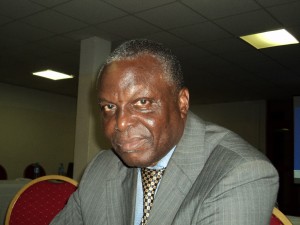
The nineteenth session of the Conference of the Parties (COP19) to the United Nations Convention on Climate Change (UNFCCC) and the ninth session of the Conference of Parties Serving as the Meeting of Parties to the Kyoto Protocol (CMP/MOP9, among other associated meetings, held from 11th to 23rd November, 2013 in Warsaw, Poland. One of the major outcomes of the conference is the Warsaw International Mechanism for Loss and Damage associated with climate change impacts.
This piece attempts to highlight some key issues and implications for government, business and the society.
In 2010, the COP16 decided to establish a work programme to consider approaches to dealing with Loss and Damage from the impact of climate change in the developing countries which are particularly venerable to the adverse effects of climate change. The most venerable countries are supposed to benefit ultimately through this programme from improved protection against loss and damage caused by extreme metrological phenomenon linked to climate change. This is a very significant step forward as the developed countries frequently prefer to avoid any decision likely to involve their responsibility.
In Doha in 2012, the establishment of an institutional arrangement for the mechanism for Loss and Damage proved somehow controversial. The developing countries proposed it but developed countries opposed it. It took an all-night last minute negotiation for a text to be agreed on the establishment of an institutional arrangement at COP19 in Warsaw, Poland.
The conference stressed the role of the convention in providing the implementation of approaches to address Loss and Damage to include:
- Enhancing knowledge and understanding of comprehensive risk management approaches.
- Strengthening dialogue among relevant stakeholders.
- Enhancing action and support including finance, technology and capacity building to address Loss and Damage.
The Parties (member countries) were invited to enhance action addressing Loss and Damage by (a) designing and implementing country – driver risk management strategies and approaches,
(b) implementing comprehensive climate risk management approaches and (c) promoting an enabling environment that would encourage investment and the involvement of relevant stakeholders in climate risk management.
The COP requested developed county parties to provide developing country parties finance, technology and capacity building.
In COP19, after series of negotiations it was agreed to, as proposed by the President of COP19, that an institutional mechanism including functions and modalities to address Loss and Damage associated with the impact of climate change in developing countries are particularly vulnerable to the adverse effects of climate change be established.
The Warsaw International Mechanism for Loss and Damage under the Cancun Adaptation Framework is “to address Loss and Damage associated with impacts of climate change including extreme events and slow onset events in developing countries that are particularly vulnerable to the adverse effect of climate change.”
The Warsaw Mechanism is expected to promote the implementation of approaches to address Loss and Damage associated with the adverse effects of climate change, provide leadership, enhance knowledge and understanding of comprehensive risk management approaches to address Loss and Damage, collection, sharing, management and use of relevant data and information.
The Implications
The UNFCCC Loss and Damage mechanism has raised fundamental issues in knowledge and understanding of comprehensive management approaches.
The impact of Loss and Damage associated with climate change is likely to increase the incidence and severity of poverty in countries that are vulnerable to climate change. In Nigeria there are evidences of loss associated with climate change – agriculture-wash-away of crops leading to poor harvest, health – disease outbreak and increasing climate impacts on vulnerable regions.
As climate change continues unabated, economic losses from extreme weather events and natural disasters are expected to increase. In Nigeria, climate change has implications for development. The 2012 flood experience showed that losses caused by weather -related natural catastrophes are enormous. As the frequency and scope of losses due to natural catastrophes increase there is a growing need to explore meaningful risk transfer options for managing and mitigating climate change risks. One of such feasible option is climate risk insurance.
Approach
The path of reducing poverty and vulnerability through climate risk insurance can be a business case that can provide window of opportunities for insurance companies.
The impact of Loss and Damage associated with climate change is likely to increase the incidence and severity of poverty in Nigeria.
Poverty is a root cause of vulnerability as low income individuals have fewer resources to absorb extreme weather shocks. By increasing their ability to manage as well as to mitigate weather-related risks, climate risk insurance has the potential to play a significant role in reducing vulnerability and contributing to social and economic well-being.
It is important for us as a nation to get to the drawing board and see how Nigeria can benefit from different global climate finance opportunities. The negotiation is still on-going and the implementation options can include such elements as climate risk management facility, capacity building, filling data gaps and identifying financial needs.
The most vulnerable countries to Loss and Damage due to climate change should not look for one solution or fold their arms; rather they should consider various tools that can be implemented at various levels.
It is suggested that (i) we consider future needs associated with possible approaches to address the risk elements, (ii) invest in preparing technical papers on non-economic losses and on gaps in existing institutional arrangement globally to address loss and damage, and (iii) design and implement country-driven risk management strategies and approaches.
It is clear that even without taking climate change into account, disaster risk will continue to increase as more people and assets are exposed to weather extreme. It is therefore desirable that we embark on capacity building, training and involvement of all stakeholders in addressing the challenges and opportunities in the Loss and Damage.
By Prince Lekan Fadina
Prince Fadina is a Negotiator in the United Nations System on Climate Change, Sustainable Development and Trade. He is Executive Director, Centre for Investment, Sustainable Development, Management and Environment (CISME)
